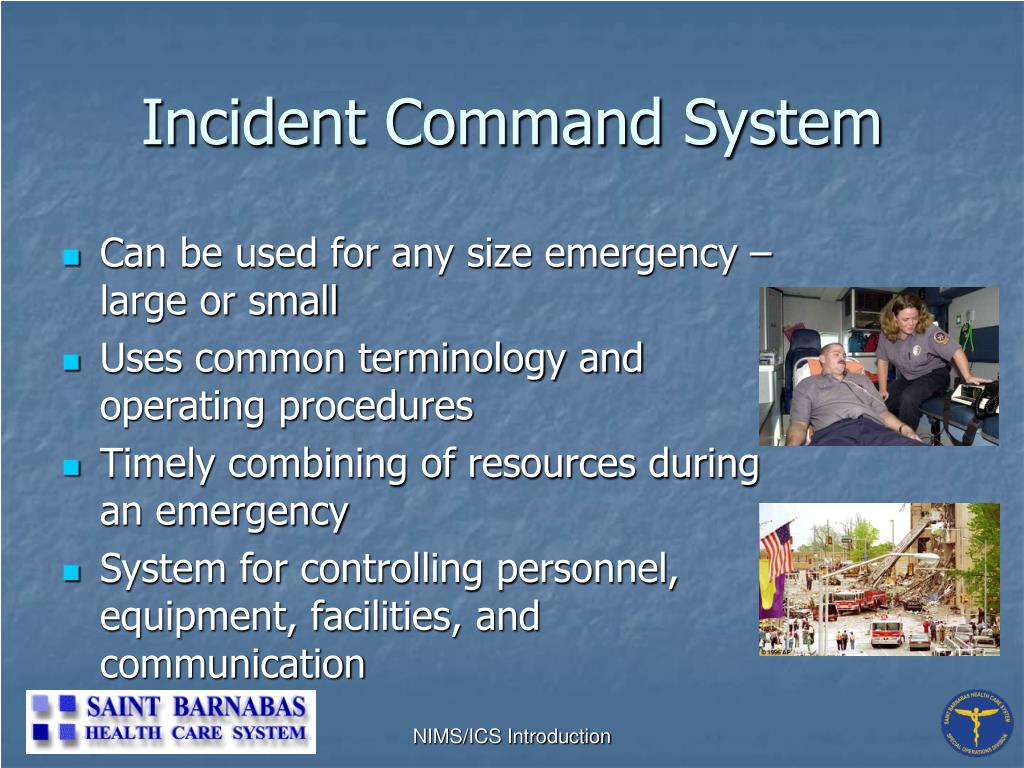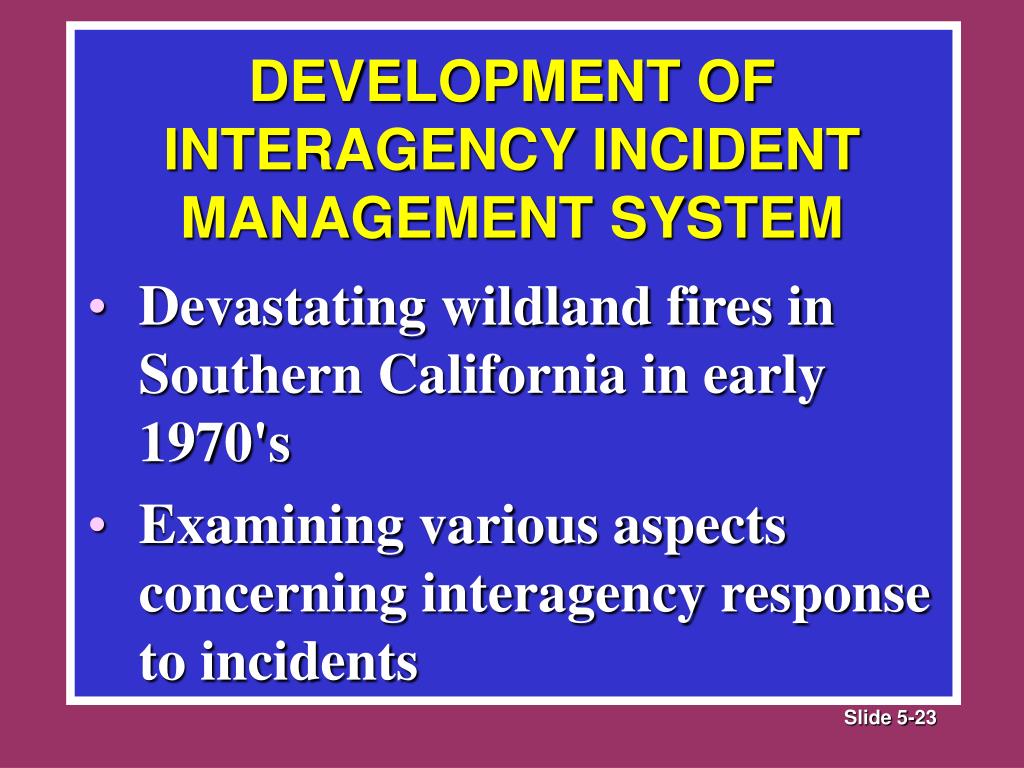
Appropriate responsibility and authority.Clear, defined and visible lines of command.The key components of the incident command system include: It encourages a controlled and systematic approach to resolving incidents. The system is designed to help an incident commander manage and fulfil their incident plan. Similarly, supervisors who require fewer than three resources can usually have their personnel absorbed by another division, section, or branch of the ICS.The incident command system is an all-hazards approach, providing a progressive, scalable and flexible system of operational command, control and organisation. Should the number of resources continue to expand, the ICS can be adjusted to appoint additional branches as required. To that end, any supervisor should have no more than seven resources under their command. Fire departments routinely stand up an "operations" section during the response to a building fire.Ĥ) SPAN OF CONTROL: Effective communication is predicated upon a clear cut understanding of operational responsibility. This organizational scheme permits the command structure to be aligned with the resources required for any incident response. A natural disaster that crosses state boundaries, however, may require a significant amount of expansion. A multiple vehicle accident, for example, many not require formal logistics or financial sections.


For example, the individual in charge of a fire, police, or EMS incident is always referred to as the "incident commander." Whether responding to an in-hospital or pre-hospital incident, individuals will be easily recognized by a common title.ģ) FLEXIBLE AND MODULAR ORGANIZATION: Depending upon the scope and impact of the incident, the ICS can contract and expand to meet responders needs. Command unity also has implications for the accurate flow of information during any type of large scale incidentĢ) COMMON TERMINOLOGY: ICS avoids discipline specific language so that responders from a variety of organziations can participate in incident mitigation, response, and planning. This prevents "freelancing" during incident response and outlines a clear chain of command and responsibility. The ICS is predicated upon a few core components:ġ) UNITY OF COMMAND: Each individual resource reports to only one commander. Familiarization with ICS helps reduce confusion when the system is formally rolled out during a multiple casualty incidents.

Indeed, emergency medical services systems routinely utilize ICS terminology when they are tasked with conducting emergency triage or participating in triage drills. The Federal Emergency Management Agency (FEMA) currently mandates the use of ICS for emergency operations, and is now a fundamental component of the National Incident Management System.īecause communication and inter agency collaboration is important during emergency response, it is imperative to integrate ICS language into daily operations. Seemingly simple concepts, like the need for uniform terminology, are incorporated into modern incident command strategies. To that end, the ICS system was adjusted and revised to incorporate essential elements such as incident planning and the need for supplies. The wildfire incidents permitted the ICS system to be more fully developed, but the large scale property damage and civilian casualties highlighted breakdowns in communication. It became clear that an effective, all hazards response to a large scale incident depends upon effective communication and a clearly delineated division of responsibility.

The Incident Command System (ICS), now a component of the National Incident Management System (NIMS), developed following an inter agency response to a large wildfire incidents that occurred in Arizona and California. INTRODUCTION AND BRIEF HISTORY OF INCIDENT COMMAND SYSTEMS


 0 kommentar(er)
0 kommentar(er)
